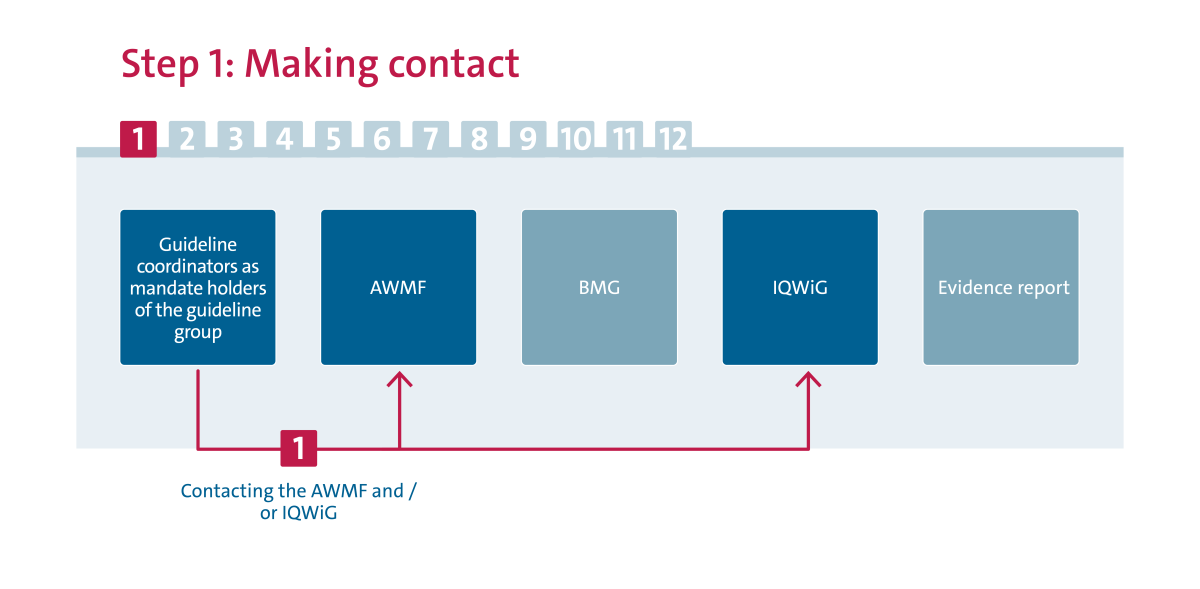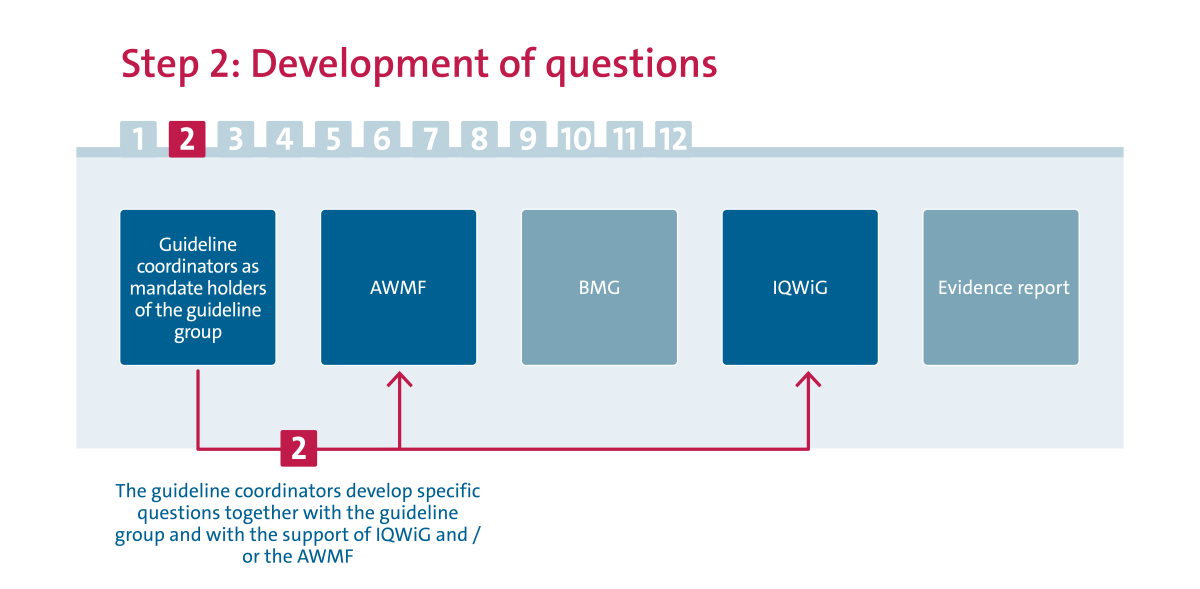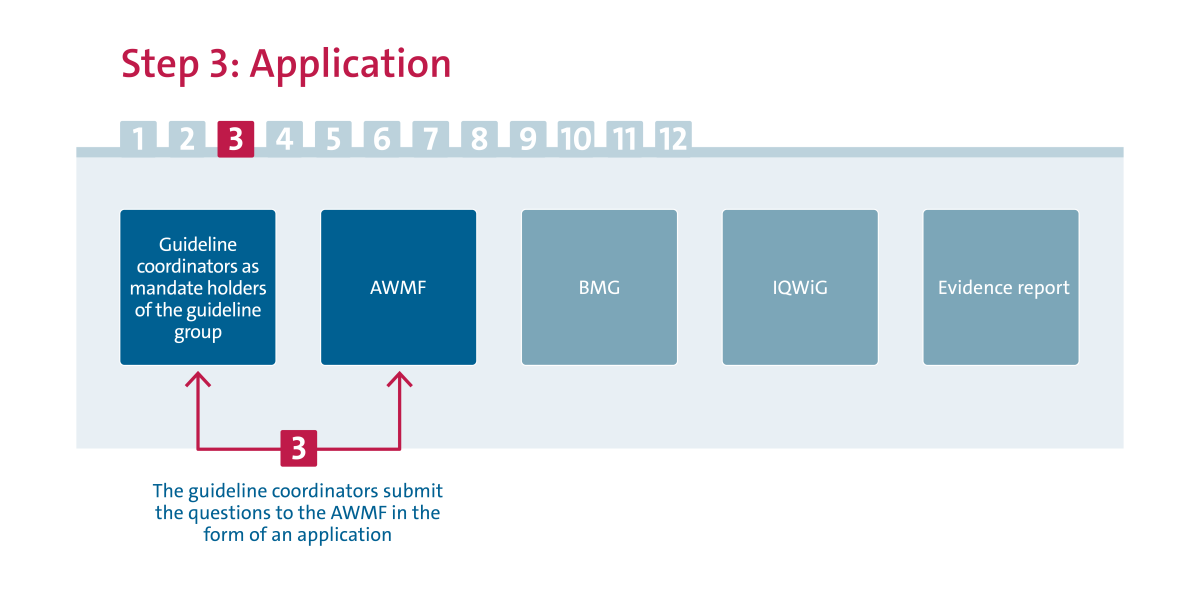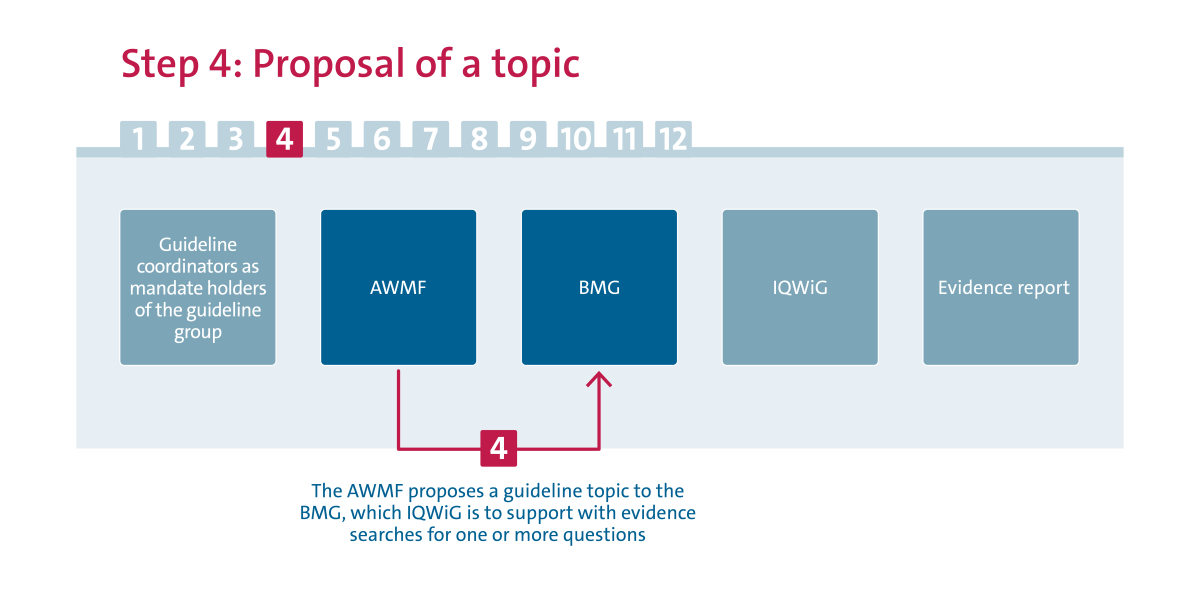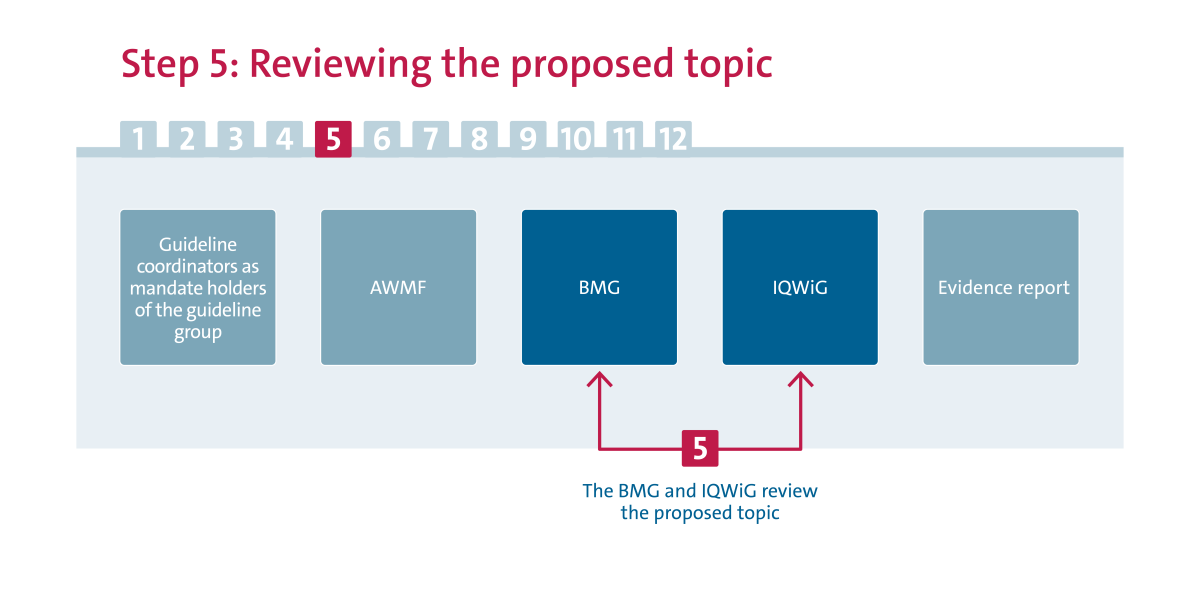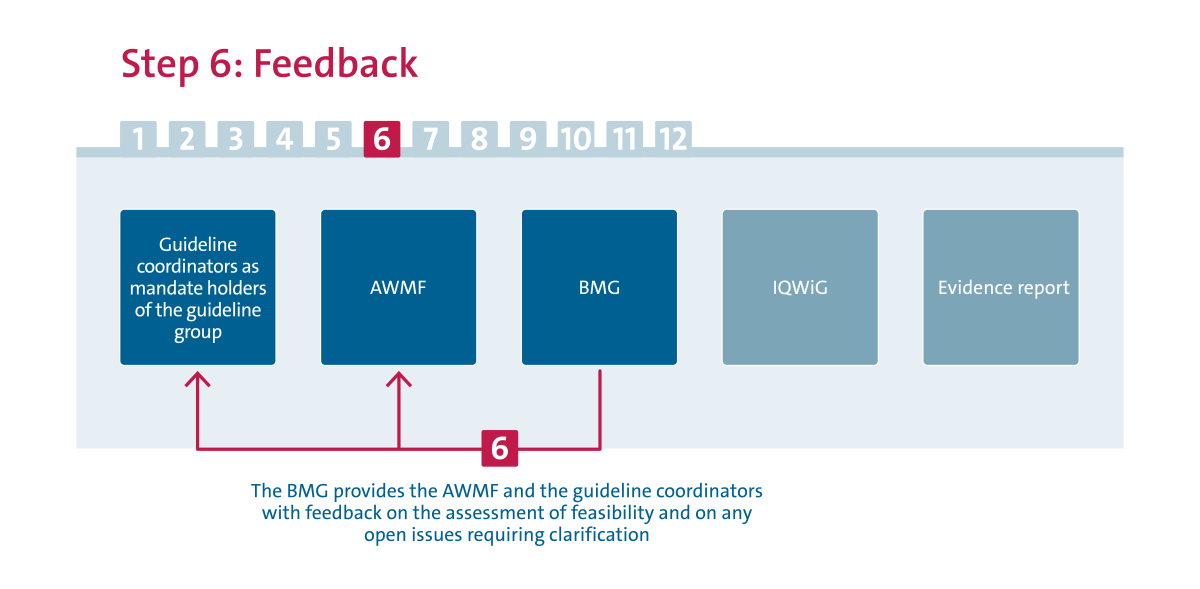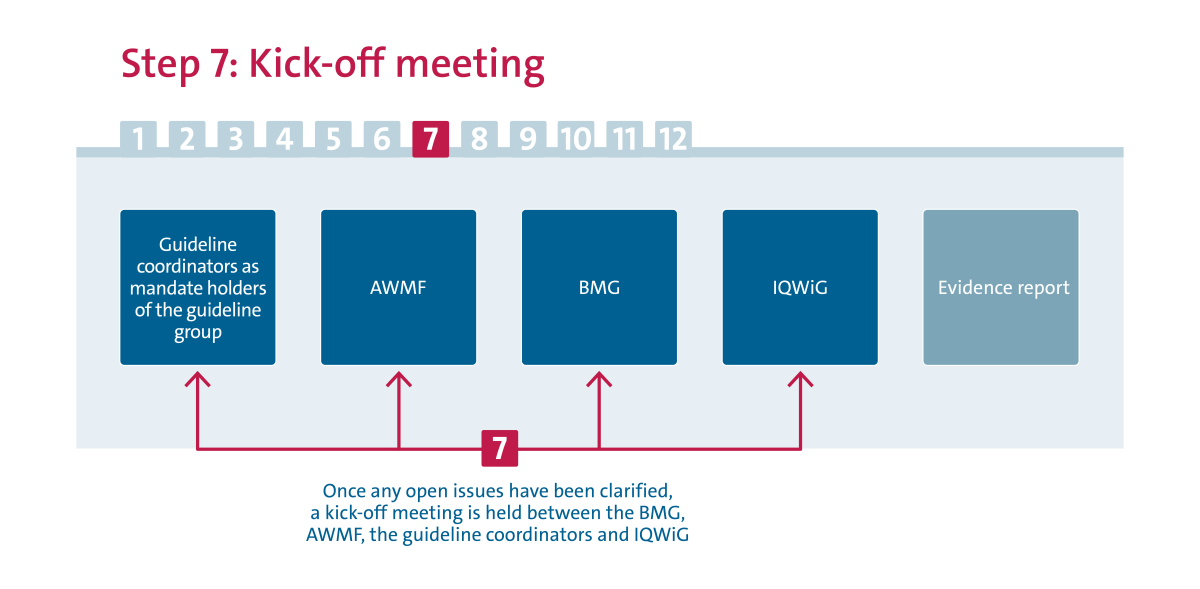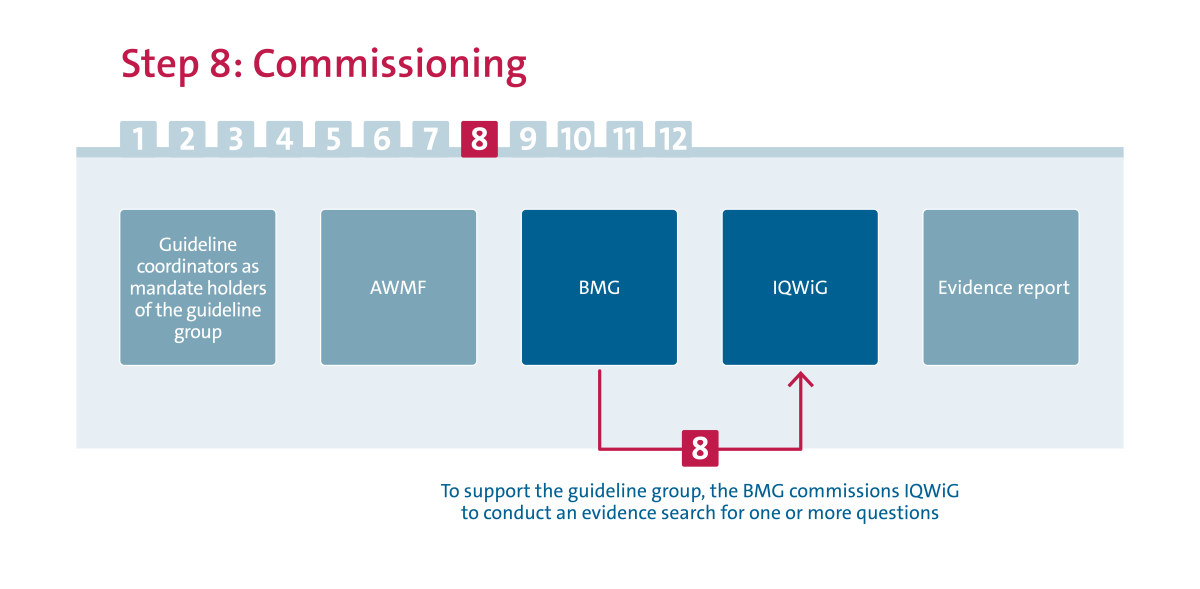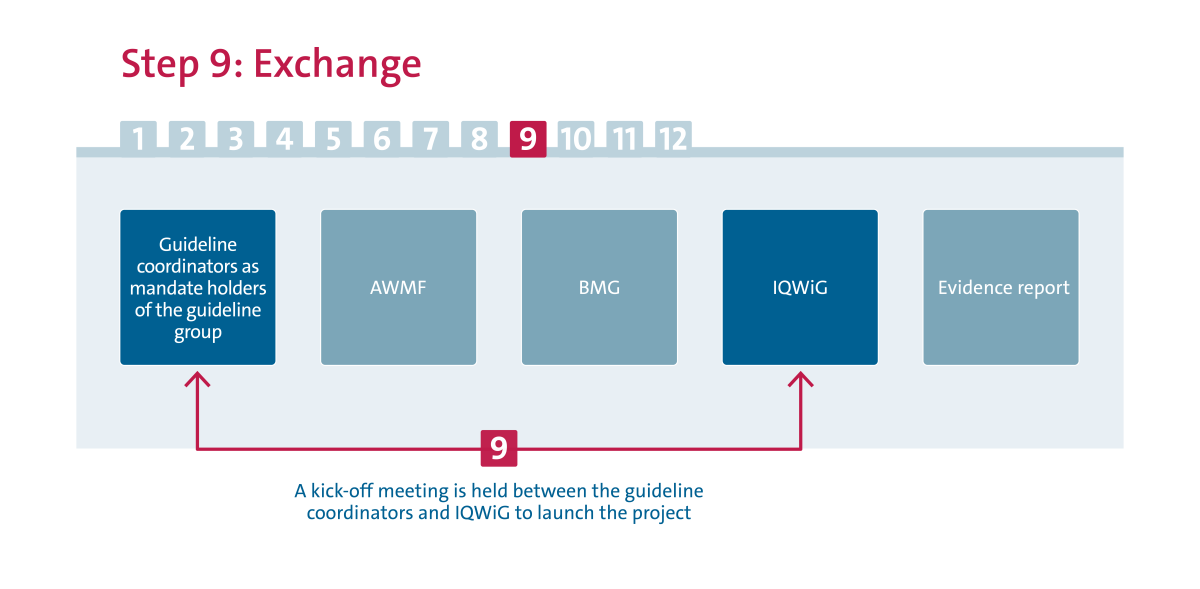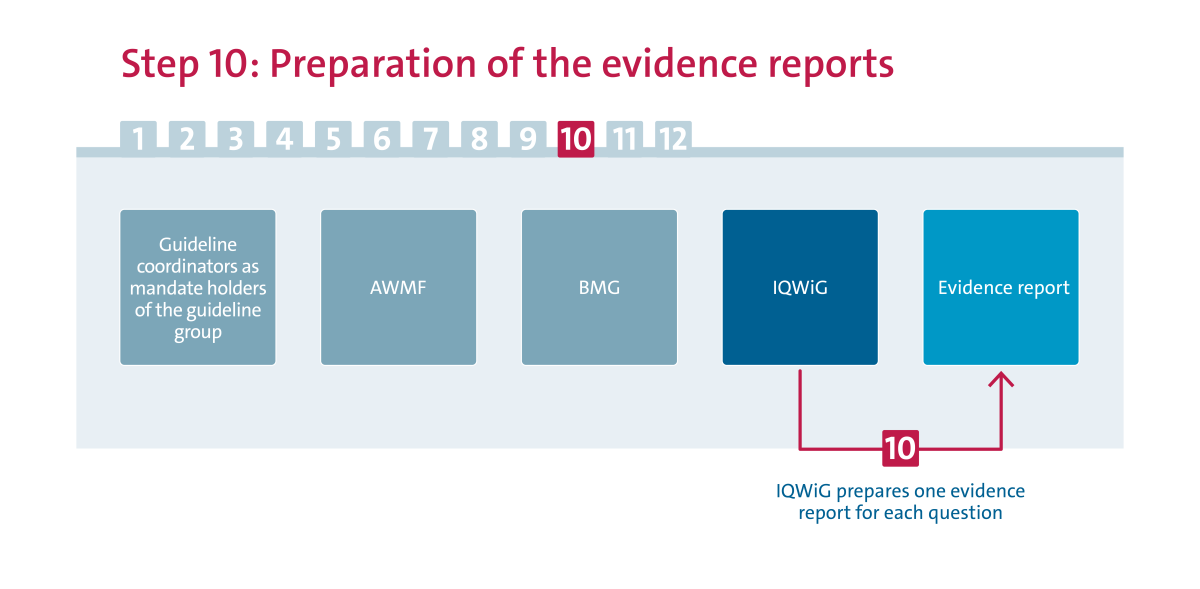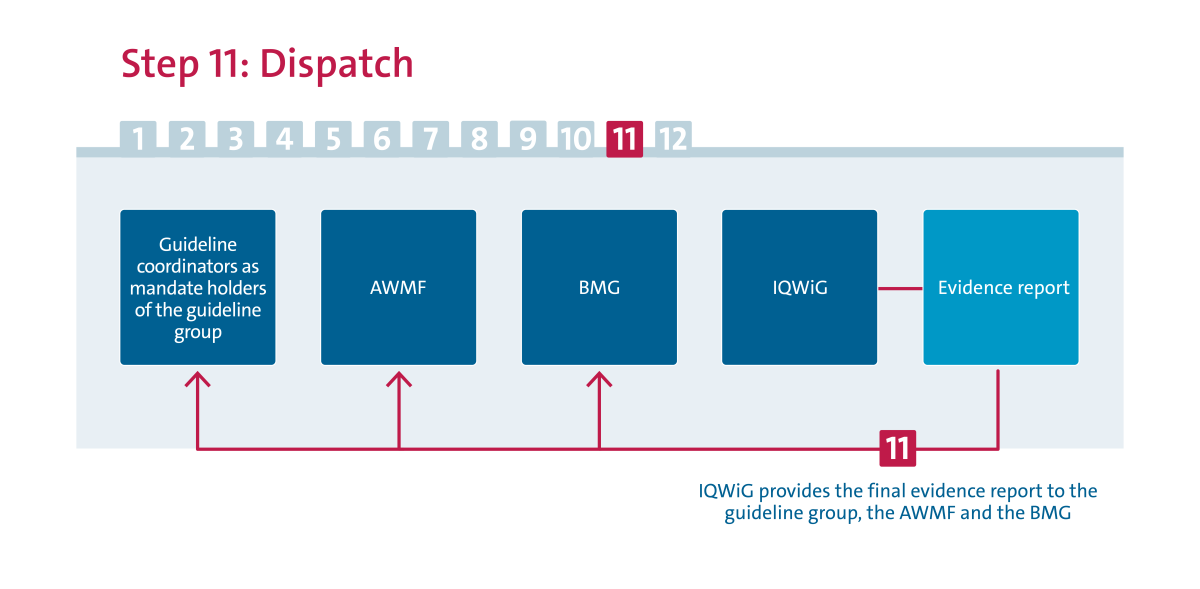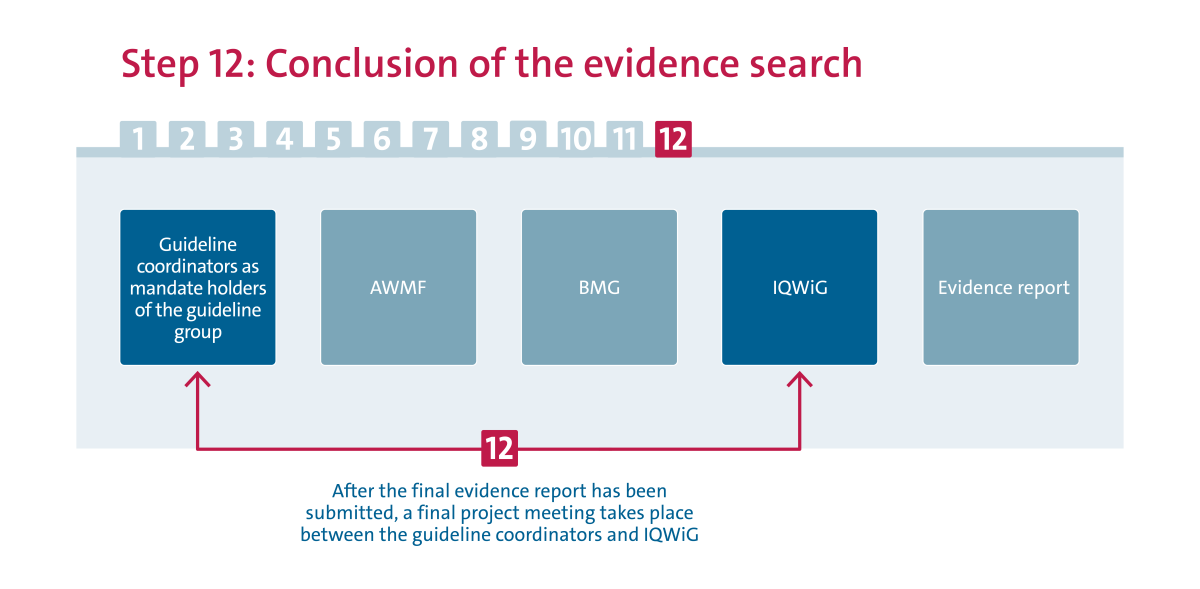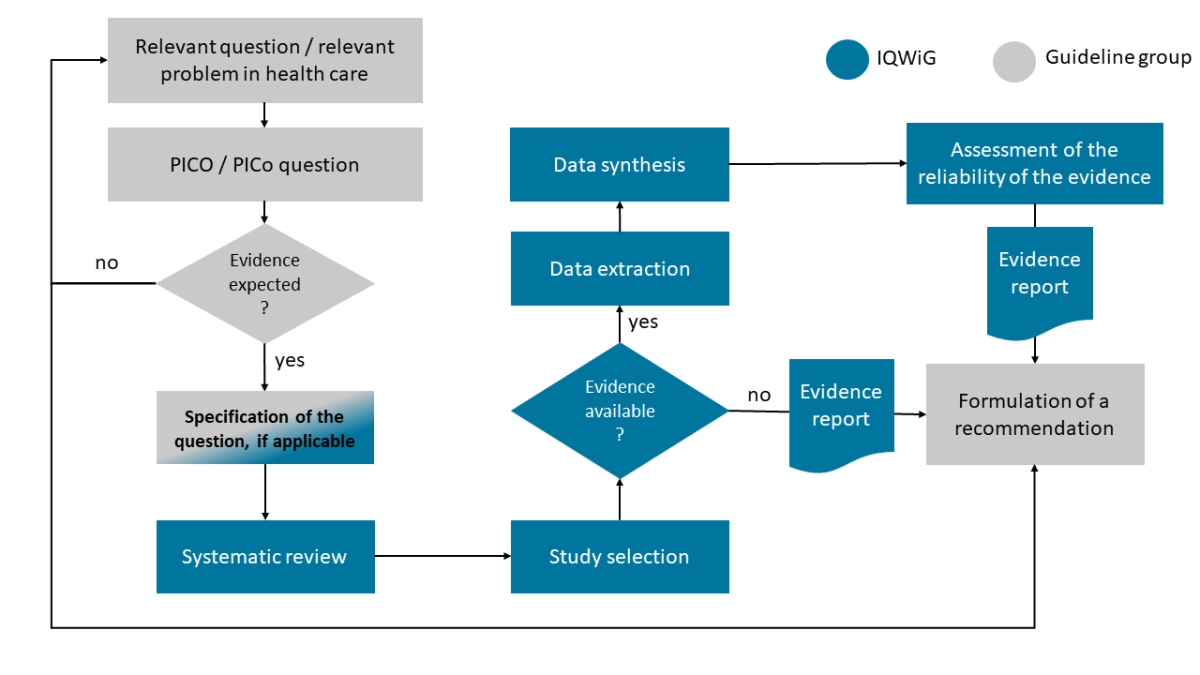Evidence searches
IQWiG supports guideline groups in the development of S3 guidelines
IQWiG supports guideline groups in the development or updating of S3 guidelines. IQWiG provides the evidence base required for this by providing systematic searches.
Intervention questions, questions on diagnostic accuracy or qualitative questions defined by the guideline group are processed by IQWiG and made available in the form of evidence reports.
The prerequisite for support from IQWiG is a successful application submitted to the Federal Ministry of Health (BMG) via the Association of the Scientific Medical Societies in Germany (AWMF).
IQWiG can support a guideline group in the development, further development or updating of an S3 guideline by conducting an evidence search. IQWiG is commissioned to do this by the BMG.
An evidence search can include one or more intervention questions, questions on diagnostic accuracy or qualitative questions.
IQWiG prepares an evidence report for each commissioned question.
IQWiG evidence reports offer...
- the systematic search for evidence on a defined question
- the transparent presentation of the search strategy and search results
- the assessment of the reliability of the available evidence
- a summarized presentation in evidence profiles (including meta-analyses, if these are meaningful and feasible)
Evidence reports do not contain recommendations for or against an intervention, a test procedure, etc.. They serve as an evidence base for the formulation of recommendations. The formulation of a recommendation is the responsibility of the respective guideline group.
Intervention questions
Intervention questions are questions on preventive (including screening) and therapeutic measures as well as diagnostic procedures, provided that their evaluation is not limited to diagnostic accuracy alone.
The questions are formulated according to the PICO scheme and contain the following domains (with examples):
| P | Population | Patients with idiopathic Parkinson's syndrome and fluctuations that cannot be treated with medication |
| I | Intervention (test intervention) | Bilateral electrical stimulation of the subthalamic nucleus |
| C | Comparison (control intervention) | Drug (standard) treatment |
| O | Outcome (endpoints) | Motor function (UPDRS III) and adverse events (paralysis, speech disorders, inflammation) |
Questions on diagnostic accuracy
Questions on diagnostic accuracy are limited exclusively to the processing of evidence on diagnostic accuracy.
The questions are formulated according to the PICO scheme and contain the following domains (with examples):
| P | Population | Adults (≥ 18 years) with suspected gouty arthritis |
| I | Index test | Ultrasound: double contour sign and/or tophus according to the OMERACT definition |
| C | Comparison (reference test) | Microscopic detection of sodium urate crystals in the synovial fluid or in the periarticular tissue |
| O | Outcome (endpoint) | Diagnostic accuracy (e.g. sensitivity and specificity) |
Qualitative questions
Qualitative questions can include, for example, experiences, perceptions or expectations of people or groups of people on topics relevant to health care. Such questions are generally only addressed if no evidence from randomized controlled trials (RCTs) or non-randomized comparative studies (non-RCTs) can be expected.
The questions are formulated according to the PICo scheme and contain the following domains (with examples):
| P | Population | Patients with dementia and their relatives |
| I | Phenomena of Interest | Experiences and perceptions of patients and their relatives regarding the standardized process informing about the initial diagnosis |
| C | Context | Outpatient setting |
| o | Others/ outcome (examination category) | Patients' perspective on quality of life and everyday competence, relatives' perspective (stress, depressive symptoms) |
Are you part of a guideline group and interested in support from IQWiG? Then you have 2 options for realizing your project:
- You register your guideline project with the AWMF and the AWMF forwards your request to us.
- You contact us directly (evidenzberichte@iqwig.de). This can be done before or at the same time as registering your guideline project with the AWMF.
Together with you and in consultation with the AWMF, we formulate the specific questions of your proposed topic. The AWMF then proposes the corresponding guideline topic with the specific questions to the BMG. If the proposal is accepted by the BMG, the BMG commissions IQWiG to conduct an evidence search to support the guideline group.
Note: The AWMF is your primary contact for your guideline project.
Detailed information on submitting an application and the conditions for IQWiG's support service can be obtained from the AWMF.
Schedule
The amount of time and resources required for Steps 1-3 depends on various factors:
- To what extent did you specify the potential questions in your guideline group?
- Which of your questions require support from IQWiG?
- As the guideline coordinator, how promptly can you facilitate appointments for issues requiring clarification and specification? It would be helpful if you could involve a person with methodological expertise in these meetings.
Steps 4-7: This process can take about 2 months. Steps 8-12: The preparation of an evidence report using an average amount of resources takes approx. 5 months - the processing time may vary depending on the complexity. After all evidence reports have been submitted to the guideline coordinators and published on IQWiG's website, the guideline should be finalized within 6 months, if possible.
The core elements of the evidence reports are the report tables and the evidence profiles. Among other things, they contain important information on inclusion criteria, information retrieval, study characteristics, results and the assessment of the reliability of the evidence with corresponding calculations and meta-analyses. All published evidence reports can be found here.
Example of an intervention question
The following text is an excerpt from IQWiG project V21-08B "Surgical removal of uterine fibroids versus no treatment", an evidence report on the S3 guideline "Diagnosis and treatment of benign diseases of the uterus".
The following intervention question was answered in this evidence report: "The aim of the evidence report is to present the evidence regarding the effects of surgical removal of uterine fibroids compared to no treatment in patients who wish to have children and have ≥ 1 detectable uterine fibroid."
To answer the research question, the following inclusion criteria for the evidence report were defined together with the guideline group:
Table 1: Overview of the criteria for study inclusion (excerpt from original table)
Example of a question on diagnostic accuracy
The following text is an excerpt from IQWiG project V22-06A "Test accuracy of various procedures for the diagnosis of gout", an evidence report on the S3 guideline "Diagnosis and treatment of gout".
To answer the question, the following inclusion criteria for the evidence report were defined with the guideline group:
Table 1: Overview of the criteria for study inclusion
| I1 | |
| I2 |
|
| I3 | |
| I4 | |
| I5 | Study type: prospectively planned cross-sectional and cohort studiesb |
| I6 | Publication language: German or English |
| I7 | Full publication availablec |
| a. Both terms - tophus and tophi – are considered. b. Key aspects of the certainty of results in studies on diagnostic accuracy are the consecutive inclusion of patients and the documentation of missing values. If the number and quality of studies are sufficient, only those that fulfil these requirements are included. c. In this context, a full publication is also a report on the study that meets the criteria of the STARD or STROBE statement and enables an assessment of the study, provided that the information contained in these documents on the study methods and the study results is not confidential. | |
| ACR: American College of Rheumatology; DECT: Dual-Energy Computed Tomography; EULAR: European League Against Rheumatism; OMERACT: Outcome Measures in Rheumatology; STARD: Standards for the Reporting of Diagnostic Accuracy; STROBE: Strengthening the Reporting of Observational Studies in Epidemiology | |
Helpful materials
Legal basis: Social Code Book (SGB) V, Sections 139a (3), No. 3, 139b (6)
According to the German Digital Healthcare Act (DVG), the Association of the Scientific Medical Societies in Germany (AWMF) can propose guidelines to the Federal Ministry of Health (BMG). The Institute for Quality and Efficiency in Healthcare (IQWiG) supports the development or updating of these guidelines with evidence searches.


